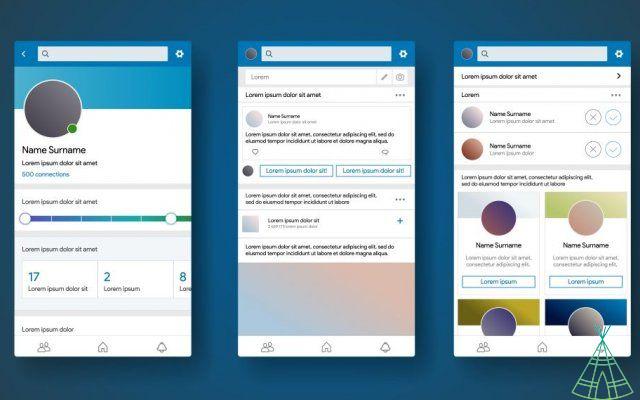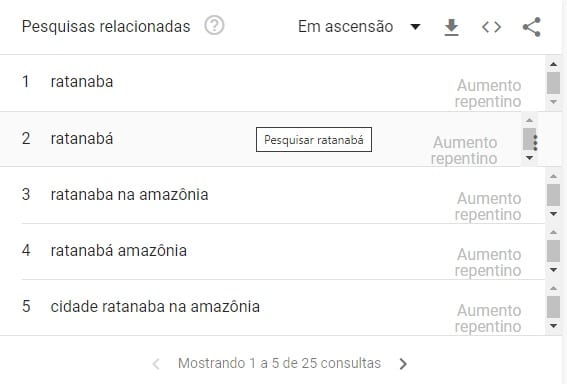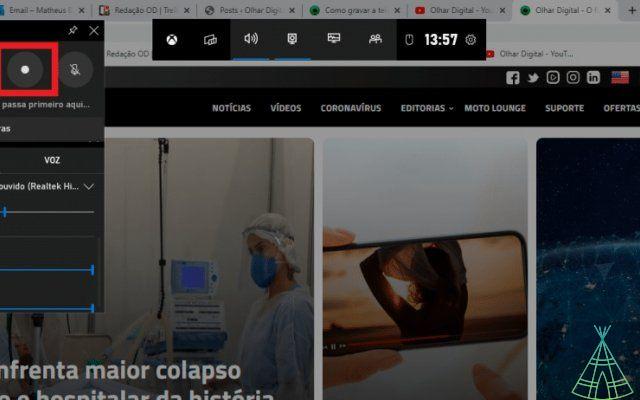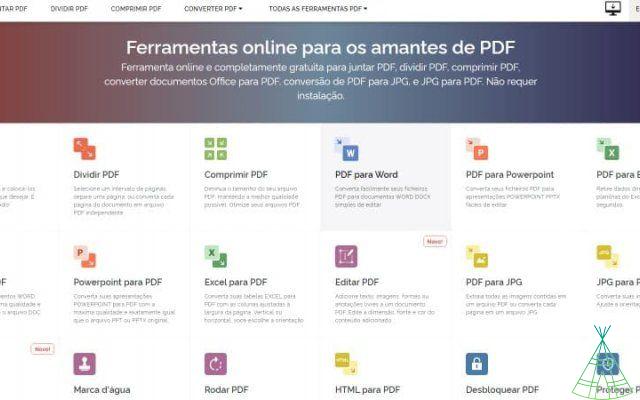In the past, when we needed to understand content in a language we didn't know, we had to resort to a dictionary. The process was slow and the translation often left something to be desired, as there are endless variations between words in different languages. However, this changed the internet and today it is possible to use an online translator for English, Portuguese and virtually any other language. But which will be the best of them? We separate some options for you to use.
What is the best English-Portuguese translator? Check out 12 options
Microsoft Translator
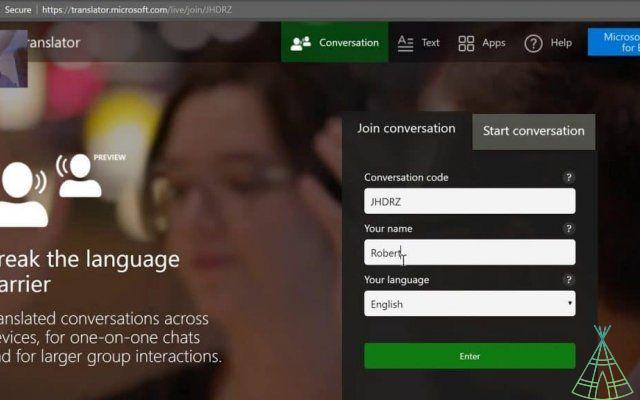
Of course, one of the biggest internet companies in the world also has its translator. But Microsoft Translator is not just a translation service, in its different packages it has a series of resources for the most varied audiences.
In its basic version, it has everything you'd expect from a service of this type, allowing the translation of conversations in real time, text, documents, websites, audios and even applications, being ideal for answering everyday questions, but also when traveling.
But when it comes to Microsoft, that's not all. The giant also has more complete versions of the service and some paid ones, which are part of Azure Cognitive Services, the company's cloud services network, which has a series of applications that make use of artificial intelligence, including the translator.
In its business-oriented version, Microsoft Translator expands its possibilities even further. This model is capable of translating calls, internal unicates, training, forums and websites. You can use the translator, for example, to create other language versions of your website and reach larger audiences.
The live translator feature allows up to 100 participants to translate each other in their own language, facilitating business meetings. All of this can still be added to Skype and Teams.
For those who work with data analysis, it is possible to use Microsoft Translator to integrate information sources from different languages into a single language, regardless of whether it is in text, audio or video. “Typically, users prepare language content by translating it using Translator and storing the rest of the native content in language 1 before processing it. o alternatively, for more dynamic workflows, the content can be translated immediately before being analyzed”, explains the company.
Translator for Education “provides free resources, tools and how-to guides for Live Subtitling and Classroom Translation. Schools are increasingly diversified. This is even useful for students who are hard of hearing or who are deaf or who are learning another language. Everything can be accessed on the official website of Microsoft Translator.
DeepL
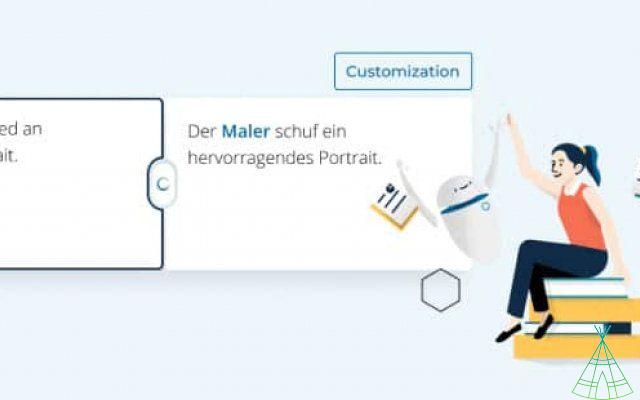
German service launched in 2017 and which managed to beat the giants of Microsoft and Google, DeepL is a translator focused on automatic translation, being one of the best (or the best) to translate English into Portuguese (in addition to other languages) on the market.
The differential of this system is the CNN, or Convolutional Neural Network, which are created using the Linguee dictionary database, which in turn uses machine learning to add new words and improve its algorithm.
CNN is applied precisely in the processing and analysis of images and words and a way to transform voice and text in a faster way that requires less pre-processing has been added to the translator. This method is also used in medicine to analyze exam images and stop other results.
Based on that, DeepL is available in English, French, German, Spanish, Italian, Dutch, Polish, Portuguese, Russian, Japanese and Chinese. It is free to use for texts of up to 5 words and is linked to Linguee. Furthermore, there is a paid version in which customers can add the DeepL system to their own website's programming interface.
In 2018, DeepL won a subscription system, aimed at companies and professional translators. Here there is no limit on the text size and the content can be stored.
Linguee

If we talk about DeepL, we also need to mention Linguee, from the same group as the previous one. This online dictionary also uses machine learning to facilitate translation, but in a different way. The system uses a web crawler to look up bilingual texts on the internet and separate sentences. These translated sentences are still verified by human employees and by the users themselves.
One of the advantages of the system is that the translation is confirmed by humans, technical terms and specific words can also be found. “Look for technical terms used by translators specializing in Engineering. Learn how law firms use legal expressions in English,” says the service.
Unlike others mentioned, the Linguee translator does not have a paid version (except if you are going to hire a human translator), in addition, it also does not have any way of and best of all: it can even be used offline in the app, since sentences are downloaded upon installation, which makes it an excellent choice for anyone wanting to translate something from English to Portuguese or any of the many other languages available.
oo Linguee is first and foremost a dictionary, the focus is more on finding words than automatically translating, which makes the interface a little more complicated to use.
Reverso
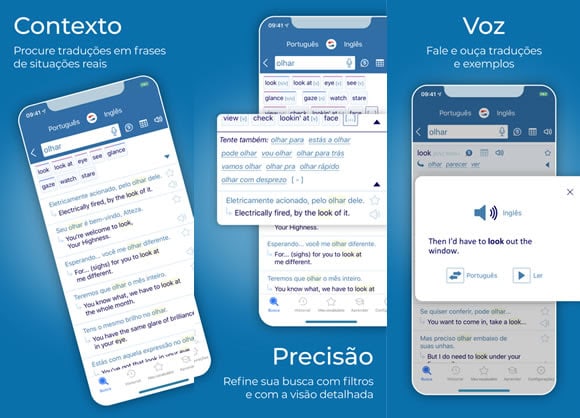
Another English and Portuguese translator, another different technology, the best thing about Reverso is its system called online translation based on NMT (Automatic Neural Translation). This translator was released in 1998 and has many different tools to help you understand other languages.
NMT technology is able to translate sentences by understanding the context in which they are inserted. The tool uses the base for this books, movies, official documents and other types of texts to try to find a similar citation. Since 2013, the dictionary also has a machine learning system to make the program even smarter.
Reverso also has the Reverso Context application, which has tools to help learn another language, flashcards and specific phrases. Reverso can be used both on the website and through extensions for Firefox and Chrome, in addition to apps for iOS and Android.
Babel

One of the oldest translators on the internet, Babylon was launched in 1997 and is still one of the most used software of its kind in the world. Here, OCR (Optical Character Recognition) technology is applied to be able to extract text from a still image or scanned file. The program also has a complete dictionary and more than 1600 reference points to help contextualize texts.
Babylon's database includes more than 60 languages divided into more than 400 categories such as health, entertainment, sports, information technology and others. The intention is to help the user to find translations of specific terms. In addition, the program is also responsible for translating Wikipedia pages and other encyclopedias.
The translator is completely free and can be accessed through the official website. One of Babylon's problems is perhaps the fact that the site is not the most intuitive and easy to use in the world, which requires a little more attention from those who want to use it.
Google translator
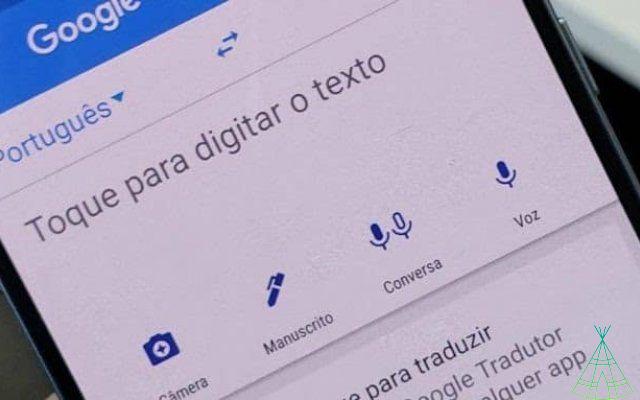
The most popular translator in the world could not be left out of that list. Google translator is an excellent option to translate your texts for free. The program is fully integrated with Google, which helps its popularity. Whenever you try to translate something in the search engine, Google Translate opens a reduced version on top of the results.
Furthermore, the system is very complete, with one of the most improved technologies for finding text in photos. It is possible to translate image content in real time and even scan texts before translating. Google Translate is still capable of transcribing audios and translating conversations.
Like the others mentioned on this list, Google Translate has a paid version, Translation. Here the idea is to allow content of your applications in multiple languages automatic and instant translation. this can localize content to specific countries.
“The Basic version of the Translation API uses Google's neural machine translation to instantly translate text into over a hundred languages. The Advanced version of the Translation API offers the same fast and dynamic results as the Basic version and other customization features”, explains the company. Google Translate can be used on the website, in the app for iOS and Android.
If you want to learn how to use Google Translate features, check out this complete tutorial prepared by Technology Refugee.
worldlingo
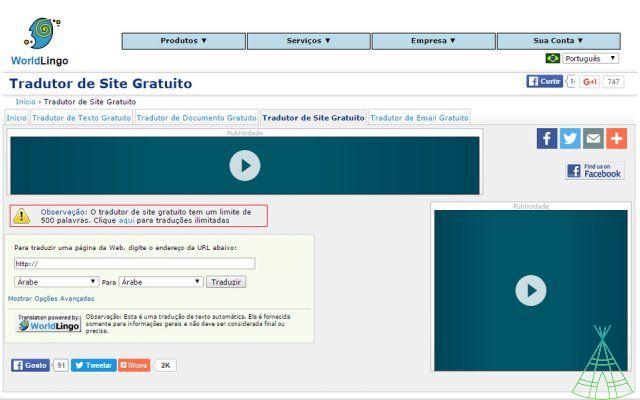
Worldlingo has a very specific purpose: translating websites. The program says it is capable of translating any website into hundreds of languages. In addition, the application has a way to help in the development of applications in more than one language.
Despite this being the focus, Worldlingo still offers a traditional translator, where you can add text and view content in another language. Also, there is an instant translation mode that can be used for chats.
Translation is not only done by a putador. One of Worldlingo's differentials is that the professional use of the program counts on the help of native bilingual human translators who can help translate documents, websites and apps. There is also a confidentiality agreement that prohibits the translator from disclosing any type of translated content.
The price of this service varies according to the size of the text, it is possible to contact the official website. The negative point here is due to the interface, somewhat outdated and old, which can make it difficult for some users.
PROMT
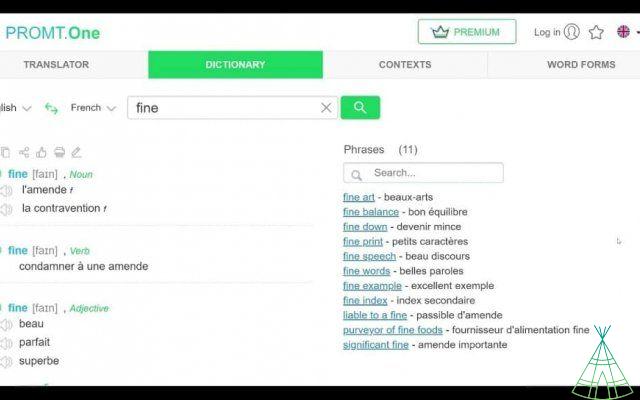
PROMT is a Russian translator launched in 1998 and has been improving over time. Initially, the program used RBMT technology, an automatic translation system that used information about source and target languages taken from dictionaries. This analysis was able to bring context to the translated content and help to form sentences in other languages.
As of 2019, PROMT started to use a new neural technology, based on the PROMT Neural Translation Server, which uses a system combining NMT and RBMT functions, previously used by the dictionary. Neural algorithms pre-analyze the text and decide which technology is best suited to translate a specific piece of content.
PROMT has a free mode, in which it is possible to translate texts and phrases, and a paid mode, in which a software is capable of doing this offline. The program can be used through the website, in the application for iOS and Android, in addition to the software for Windows and MacOS.
Travel Translator

Well, in this case the name already explains the focus, right? Travel Translator was created primarily to be used when traveling to destinations where the user is not fully fluent in the language. Because of this, the main system of the service uses voice to facilitate conversations.
Travel even allows the creation of real-time conversation groups simultaneous translation in more than 35 languages and eight connected devices at once. The group conversation is what makes it different from most programs of the type, which are usually focused on translating dialogues between just two people or on long-distance calls.
Travel even describes the pronunciation to help the traveler speak. The app can be used on iOS and in addition to the free version, it has some features that are released only by payment.
iTranslate Voice
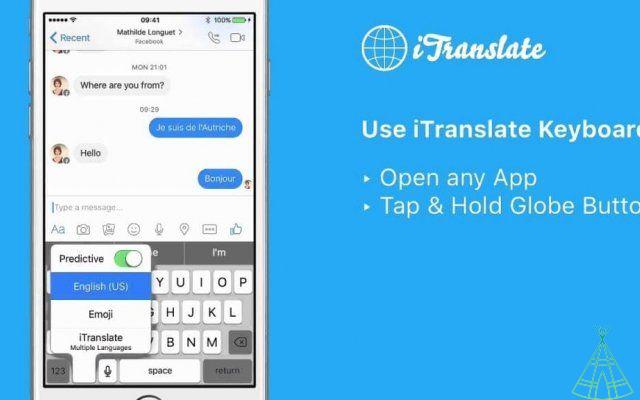
Despite its name, iTranslate is not a service exclusive to Apple devices. In addition to iOS, the app is also Android compatible. This is one of the most complete applications on the market, but most of its functions are in a paid version.
The free version allows the translation of texts and also has predefined phrases to be used in specific situations. All this in over 100 languages available in the app.
But it is in the paid version that iTranslate shines. Here you can download languages to translate offline, without relying on an internet connection. In addition, it is possible to add the translator directly to the keyboard of your smartphone, instantly translate content captured by the camera and even translate it by voice. The negative point is really that most of the service functions are paid.
Skype Translator

One more from Microsoft, this one added to the company's call service. Well, that alone is enough to imagine that Skype Translator's main function is to translate calls and virtual meetings. the pandemic and increased demand for remote work, this becomes even more important.
this translator can translate (obviously) conversations from 60 languages into 11 languages, they are: German, Arabic, Chinese (Mandarin), Spanish, French, English, Italian, Portuguese (Brazil) and Russian. To improve the technology, Skype allows users to give voice clips to the tool to analyze the language. The function, however, is optional. Skype Translator is available on any device that supports Skype.
Yandex
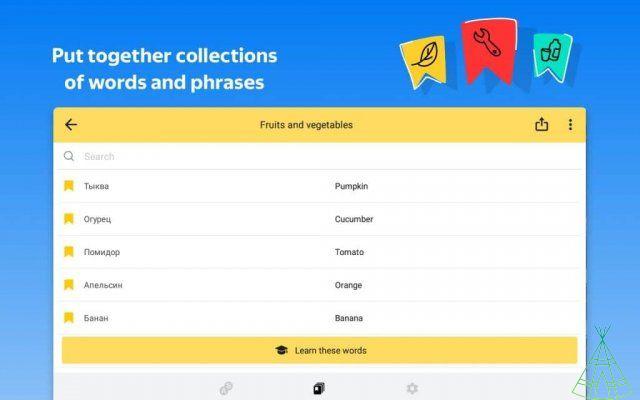
This is yet another translator that uses artificial intelligence to make a better Portuguese and English translation. The system builds the dictionary of single word translations based on the analysis of millions of translated texts. Before translating, the program stops the content from other translations and then proceeds to add basic language models to be able to give context to the text.
Since 2017, Yandex has also adopted neural machine translation in a hybrid model that mixes the PROMOT format. This was done primarily to help with instant website translation. Yandex is widely used in Russia, its country of origin, and it is even responsible for translating the Russian Wikipedia pages into English. Despite this, the program is also compatible with more than 98 languages. The service can be used on the official website.
What is the best offline English-Portuguese translator?
Among the listed options, most of them have offline translation modes, where it is possible to download the software that already has all the content necessary for the translation. However, in some cases this is paid.
iTranslate, for example, is a great offline translation option and an advanced system to be able to carry out the text identification process. However, this function is paid, as well as the others of this translator, which may not be very affordable.
As for the free part, Linguee uses a more traditional dictionary system and can work without an internet connection. Despite not being the most modern, it should be able to answer questions and translate texts offline without much difficulty.
In addition to these two options, Microsoft Translator is a good alternative, as it can be used offline and its AI technology is still capable of doing so. All you have to do is download the app for iOS or Android.
Read also:
- See translate entries on YouTube
- Japanese startup creates mask that translates between eight languages
- o use the cell phone camera for real-time translations
How does an English to Portuguese translator work?
As we saw in the list, an English to Portuguese translator uses many different methods and there isn't necessarily one that is best. However, nowadays, most of these tools are based on artificial intelligence to try to make translations more efficient.
Google Translate, Microsoft Translator, DeepL and many others use machine learning, which basically can translate a complete sentence, taking into account the context presented. Classical tools used to translate word by word, making it difficult to understand the general result.
To find words in photos or scanned files many use OCR (Optical Character Recognition in English), which can analyze each image and extract what is written
NMT technology is able to translate sentences by understanding the context in which they are inserted. The tool uses the base for this books, movies, official documents and other types of texts to try to find a similar citation.
CNN, or Convolutional Neural Network, uses dictionary databases and machine learning to add new words and improve its algorithm.
The reasons for using translation tools
There is no shortage of reasons to use a translator from English to Portuguese and other languages and it is important to choose the best one according to what you want. There is a great demand for professional use, to translate meetings, documents and others.
Translators today are also used on websites and apps. Developers certainly don't speak all the languages an app is designed for. Therefore, translation services are often used, both real and digital translators.
The most classic use of a translator is for travel. After all, there are hundreds of languages and the chances of you not mastering the language of the country you are going to are high. Because of this demand, microphone translators are extremely useful for conversations. In addition, systems that translate photos can be used for signs, documents and guides.
Advantages of machine translation

With the tools we have listed, it is possible to translate websites and pages automatically. If you have a website, for example, you can allow this content to be read by people from other countries who speak other languages. This is done almost instantly and the costs of these tools are not usually high, but what is the advantage?
Rapidity
Well, the first one already mentioned is the fact that the content can be understood even by those who don't speak the original language of the text. Another advantage is speed, as content can be translated quickly and efficiently.
Low price or gratuity
In addition, today most of the options are free. Usually, translators for home use are completely free, paid options for those who want something more complete to use at work or in academia.
Instant translation
Many of the current translators still use artificial intelligence systems focused on understanding the context of the content to offer a more efficient and optimized translation, reducing the risks of translation errors. These tools are still able to learn the content and improve translations over time. In this sense, the highlight is DeepL, Wordlingo and Microsoft Translator.
Confidentiality of Information
Another point is privacy. This may seem like something secondary in a dictionary, but if you are going to use an automatic translator to translate documents, contracts and confidential information, privacy is important as the tool will have access to everything that is being detected. Here the highlight is Yandex and Linguee, but practically all those mentioned in the list have confidentiality agreements.
What are the main limitations of online translators? Check out!
Let's say you speak Portuguese and need to write a text in a language you don't understand, English for example, no matter how good the online translator is, this task is not going to be easy.
are inaccurate
The main difficulty here is the fact that it is not possible to verify if the translated content makes sense, since it is in another language. There are synonyms, ironies and variations of connotation that are not simple to be transplanted.
Even artificial intelligence systems tend to make mistakes, so writing using a translator for a fluent person, even more so if it's a work or academic text, is not reusable. Now in informal conversations, where the person knows you don't speak the language, this is possible.
Do not analyze other factors
Furthermore, the quality of the translation is variable. Usually tools that depend on user collaboration have a content catalog to contextualize more informal text, aimed at everyday conversations. Academic articles, for example, which have a more complex language, may not be translated by the software satisfactorily.
Best English-Portuguese Translator: Can I Trust the Digital Translator?
As we have seen, digital English and Portuguese translators have a number of advantages and some limitations. They are reliable, but it all depends on the type of text and the content you want to translate. If you analyze the options, you can select the ideal one.
Conclusion
Overall, the language has a number of variations that make it difficult for online translation tools to work. However, with the advancement of technology, more efficient software is emerging, capable of overcoming these obstacles in parts. The most important thing when choosing is to understand your demand and then choose the best translator, both for English-Portuguese and for other languages.





